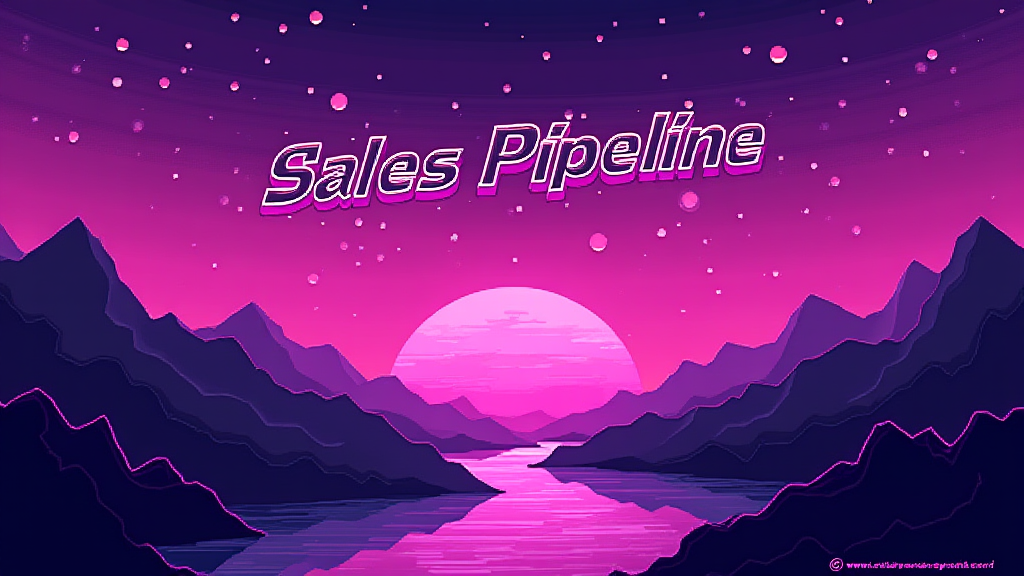Sales Pipeline: Stages of the Selling Process

Published on: October 01, 2024
A sales pipeline is a visual representation of the sales process, illustrating the journey of potential customers from initial contact to closing the deal. It's a crucial tool for sales teams to track and manage their prospects, providing insights into the health of their sales activities and helping forecast future revenue. 📊💼
Understanding the Sales Pipeline
The sales pipeline is divided into several stages, each representing a step in the sales process. While the exact stages may vary depending on the organization and industry, a typical sales pipeline might include:
- Prospecting: Identifying potential customers
- Lead Qualification: Determining if leads are a good fit
- Needs Assessment: Understanding the prospect's requirements
- Proposal/Quotation: Presenting a solution and pricing
- Negotiation: Addressing concerns and finalizing terms
- Closing: Securing the sale
- Post-sale: Follow-up and customer retention
Importance of a Well-Managed Sales Pipeline
An effectively managed sales pipeline offers numerous benefits:
- Improved sales forecasting accuracy 🎯
- Better resource allocation
- Increased sales efficiency
- Enhanced customer relationship management
- Data-driven decision making
Key Metrics for Pipeline Management
To optimize your sales pipeline, focus on these essential metrics:
| Metric | Description |
|---|---|
| Win Rate | Percentage of deals won vs. total deals |
| Average Deal Size | Total value of won deals / Number of won deals |
| Sales Velocity | How quickly deals move through the pipeline |
| Conversion Rate | Percentage of leads that become customers |
Common Challenges in Pipeline Management
While a sales pipeline is invaluable, it's not without its challenges:
- Inaccurate data entry 🚫
- Stagnant deals clogging the pipeline
- Inconsistent follow-up with prospects
- Difficulty in prioritizing leads
- Lack of alignment between marketing and sales
Best Practices for Effective Pipeline Management
To maximize the benefits of your sales pipeline:
- Regularly clean and update your pipeline 🧹
- Use a CRM system to track and manage leads
- Define clear criteria for moving deals between stages
- Conduct regular pipeline reviews with your team
- Implement a lead scoring system
- Align your pipeline stages with your buyer's journey
The Relationship Between Sales Pipeline and Sales Funnel
While often used interchangeably, the sales pipeline and sales funnel are distinct concepts:
- Sales Pipeline: Focuses on the seller's perspective and actions
- Sales Funnel: Represents the buyer's journey and decision-making process
Understanding both can provide a comprehensive view of your sales process. 🔍
Leveraging Technology for Pipeline Management
Modern sales teams can benefit from various tools to manage their pipeline effectively:
- Customer Relationship Management (CRM) systems
- Sales analytics and forecasting software
- Pipeline visualization tools
- AI-powered lead scoring and prioritization
These technologies can automate many aspects of pipeline management, allowing sales teams to focus on building relationships and closing deals. 🤖💼
Conclusion
A well-managed sales pipeline is the backbone of a successful sales strategy. By understanding its stages, tracking key metrics, and leveraging the right tools, sales teams can optimize their processes, improve forecasting, and ultimately drive more revenue.
To implement an effective sales pipeline in your organization, consider asking yourself these questions:
- How well defined are our current sales stages?
- Are we consistently tracking the right metrics?
- How can we improve our lead qualification process?
- What tools can we implement to streamline our pipeline management?
- How can we better align our sales pipeline with our overall business goals?
For more insights, check out our articles on sales pipeline management and sales pipeline coverage.

















